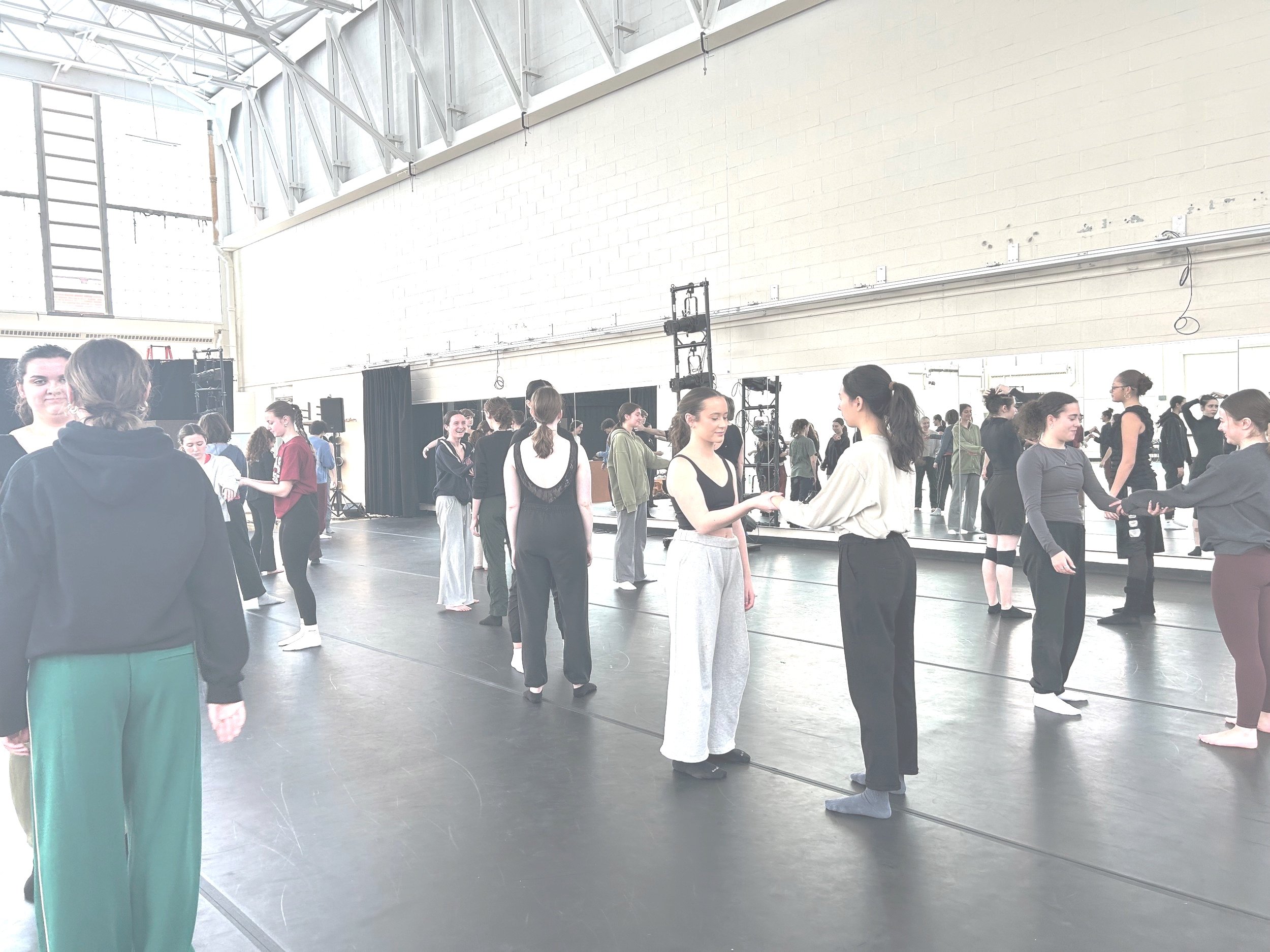
Dance in Academia
I design and teach college-level dance courses that blend theory, practice, and creative exploration to deepen students’ understanding of dance as an art form, cultural practice, and educational tool. Grounded in research-based methodologies, my courses foster critical thinking, embodied learning, and artistic growth, preparing students to engage with dance in meaningful and transformative ways.
Explore my course offerings below.
-
Introduction to Dance Education
This experiential, movement-based course is an introduction to the field of dance education based on the nationally-acclaimed Dance Education Laboratory (DEL) model (www.danceeducationlab.com).Course content will provide an overview of the key components of the DEL model of teaching dance.
Class work will include movement exploration, collaborative choreographic work, group discussion, research projects and presentations, practice teaching and lesson plan design, and classroom observations and practice teaching in a range of local educational settings.
STUDENT LEARNING OUTCOMES:
Introduction to Dance Education provides a comprehensive theoretical and practical foundation in the major components of an inclusive and student-centered dance education for all learners. In this course students will:
Ø Explore the components of the DEL model
Ø Understand the philosophical and educational roots of dance education
Ø Develop a rationale for dance education
Ø Explore applied Laban Movement Analysis (LMA) as a framework for
lesson planning and dance making
Ø Demonstrate how to use applied LMA to analyze and describe a range of dance forms
Ø Understand developmental characteristics of different grade/age levels/abilities
Ø Explore creative approaches to teaching dance technique
Ø Design lesson plans following the DEL lesson plan format
Ø Gain a baseline knowledge of state and national dance standards
Ø Understand how to connect dance to other disciplines (ELA, history, science for example)
Ø Observe local dance classes to reflect on effective teaching strategies and lesson planning
Ø Identify and practice skills, strategies and methodologies that support inspired and effective teaching
Ø Create meaningful and age-appropriate dance experiences for diverse populations within an inclusive and culturally responsive learning environment
Ø Create a dance teacher’s toolkit of resources and effective teaching strategies
Ø Reflect on one’s current teaching practice and articulate a teaching philosophy/pedagogy statement
-
Course Description:
This advanced course builds upon Introduction to Dance Education, diving deeper into best practices for diverse teaching contexts. Students will explore curriculum design, assessment strategies, national and state dance standards, culturally responsive pedagogy (CRP), and social-emotional learning (SEL).In addition, students will:
✔ Design and teach dance residencies in local schools and studios
✔ Develop a community engagement project bringing dance education to diverse populations
✔ Gain hands-on experience with Pre-K–12 curricula, supporting MLL learners and literacy integrationCourse Activities:
Movement exploration, choreographic collaboration, lesson planning, classroom observations, and practice teaching. -
Course Description:
This course explores the lineage of American modern dance and its pioneers, including Isadora Duncan, Ted Shawn, Doris Humphrey, Martha Graham, José Limón, Katherine Dunham, Alvin Ailey, and others. We will study their impact on the evolution of modern dance and their roles as agents of social change.Key Topics:
✔ The philosophical and artistic foundations of modern concert dance
✔ The impact of social, cultural, and historical contexts on dance development
✔ Underrepresented artists in dance history, including Edna Guy, Asadata Dafora, Pearl Primus, Michio Ito, Blondell Cummings, and Eleo Pomare
✔ Research and reconstruction of historical dance works through embodied dance historyCourse Activities:
Group research, presentations, writing assignments, dance reconstructions, and critical discussions. -
Course Description:
This applied writing course prepares dancers to effectively communicate their artistic and professional ideas. Students will develop a portfolio of writing samples, covering various dance-related writing forms.Key Writing Assignments:
✔ Artist bios, resumes, and personal statements
✔ Choreographic proposals and grant applications
✔ Press releases and promotional materials
✔ Dance reviews and scholarly research papers
✔ Multimedia writing (podcasts, blogs, website content)Course Activities:
Peer review workshops, writing exercises, APA format review, and developing personal writing voice. -
Course Description:
This course examines dance as a universal art form, exploring how it reflects religious, artistic, political, and community values across cultures. Students will investigate the impact of globalization, technology, and social changeon dance traditions worldwide.Course Activities:
✔ Research and written analysis of global dance forms
✔ Embodied practice of select dance styles
✔ Guest artist engagement and collaborative projects
✔ Observing and analyzing live and recorded performancesCourse Objectives:
✔ Understand the socio-cultural and historical contexts of dance
✔ Explore dance traditions from diverse global communities
✔ Recognize and describe characteristic styles of various cultural dance forms
✔ Develop cultural competency and critical thinking skills through dance analysis